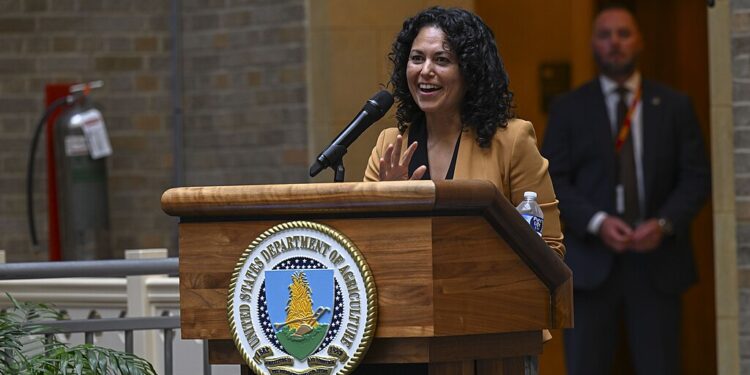They are tackling skyrocketing prices.
In response to rising egg prices caused by a severe bird flu outbreak, the U.S. Department of Agriculture (USDA) has unveiled a $1 billion initiative aimed at controlling the disease and aiding poultry farmers. The outbreak has devastated poultry flocks across the country, resulting in the loss of more than 166 million birds since 2022, according to the CDC.
The USDA’s plan, outlined by U.S. Secretary of Agriculture Brooke Rollins, emphasizes several key areas: improving biosecurity measures on farms, offering financial compensation to farmers for lost flocks, and funding vaccine research to prevent future outbreaks. The plan includes $500 million for biosecurity enhancements, $400 million for compensating farmers (with biosecurity audits required before payouts), and $100 million dedicated to researching bird flu vaccines and treatments.
The USDA is also considering regulatory changes that would ease restrictions on backyard chicken farmers and the potential for temporary egg imports to increase supply and reduce prices. However, some experts and farmers have expressed concerns that the plan falls short, particularly in its focus on biosecurity rather than prioritizing vaccine use, which some believe is key to controlling the virus.
Vaccines for bird flu have faced resistance due to cost and trade implications, as many countries ban the import of vaccinated poultry. However, experts like Jennifer Nuzzo from the Pandemic Center at Brown University argue that vaccines could help protect birds from the lethal effects of the virus, potentially reducing the financial toll of culling flocks.
The bird flu outbreak has already cost taxpayers over $1.25 billion in poultry compensation. Despite these efforts, about 20% of infected farms have experienced repeat outbreaks, highlighting the need for stricter biosecurity audits moving forward. USDA officials hope the situation will improve by summer, though prices are expected to remain high through Easter.

































Discussion about this post